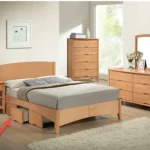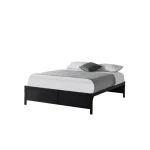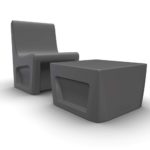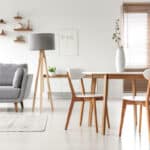The Secret of a Better Table

Tables serve an essential function in our lives. In our homes and our workplaces – tables are the place we share meals, organize paperwork, talk, listen, play games and maybe just put our feet up at the end of a long day.
When furnishing a heavy use group home or group living environment, selecting a table that will be multi-functional and hold up to the demands of a heavy use environment is not an easy task.
Nice looking tables are available around every corner from retail furniture stores to big box retailers. You can easily grab a nice-looking dining table while picking up your weekly groceries and toilet paper, but what is that you get when you buy what’s convenient? It is hard to tell so let’s start by looking at makes a “good table.” A great table starts with a great base.
- Solid wood is certainly a good option and the more wood supporting the table the better.
- Some group living facilities prefer the classic look of a table with four legs but column and trestle bases offer a little extra leg room and can be more accessible for wheelchairs.
- A good wood table base should use at least 2” thick solid wood. Four-leg table models should have 2×2 or thicker leg posts with reinforced corner block construction to keep legs stable.
- Wood trestle or column bases should have a substantial spreader assembly (preferably steel) that attaches the base to the table top to ensure stability.
High-strength steel or cast iron bases are the rock stars of table bases and will easily offer years and years of solid support.
- The gauge of the steel in a table base is important and heavy-wall tube steel is highly durable and a good standard to look for when shopping for tables.
- Steel gauge is confusing topic since the lower the gauge the thicker the steel but as a good rule of thumb look for steel gauge of 16 or lower to ensure that the structure will really stand up to years of use.
- If gauge information is not readily available then there is a good chance that the manufacturer is avoiding sharing the information because the base is not high quality.
- The big box store products tend to look durable and solid but rarely stand the test of time in heavy use environments.
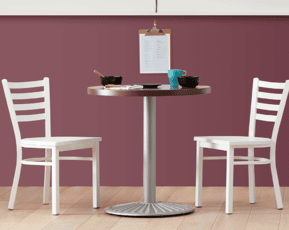
Table tops can be: Solid wood, wood with laminate or wood with veneer. Metal tops are also available.
Wood or wood look tends to be the most popular options because finished wood and wood grains add visual warmth.
- Table tops should be at least 1” thick and up to 2” is an even better product.
- Caution should be used when assessing the quality of a table top based on thickness because solid wood and wood particle cores can warp. Manufacturers who understand quality production will ensure that tops are dried to 6-8% moisture.
- Wood and wood particle cores have some sort of water content due to the nature of wood and higher moisture content increases the likelihood of warping. A knowledgeable supplier should be able to explain the construction of the table tops they offer and help you compare the features and benefits of the different types.
Unlike chairs and upholstered furniture, tables really hold their style well for long periods of time and will be replaced less frequently than other pieces of furniture. So if you are selecting tables knowing that you and your staff will be looking at them for a long time make sure to take your time and select tables that will take the years of heavy use ahead of them.
Don’t fall victim to good-looking, quick fixes from big box department stores – they are rarely contract quality and will need replacing sooner than your budget will be ready. When planning your next furniture project always be sure to contact a reputable contract furniture supplier who can give you the right advice and support.
Topics: Dining Tables, Group Furniture Buying Advice, group living furniture, Tables



